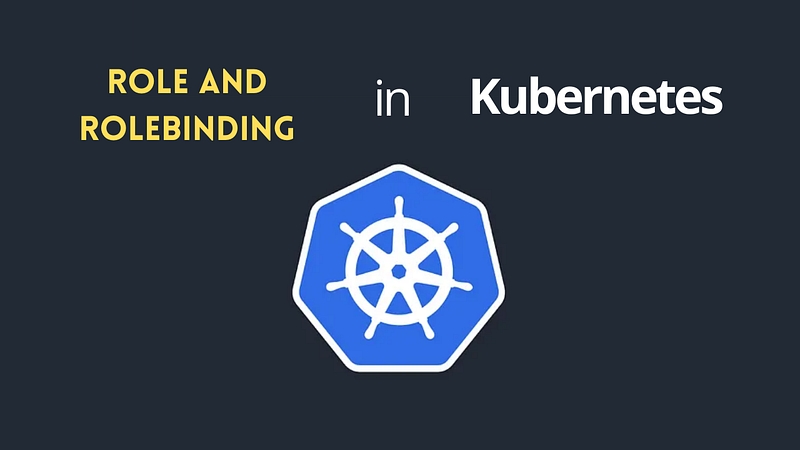Understanding Kubernetes: Part 27 Role and RoleBinding

📢 If you’ve been following our Kubernetes series 2025, welcome back! For new readers, check out Part 26: Preemption and Priority
Introduction
Kubernetes Role and RoleBinding are essential components of Role-Based Access Control (RBAC). They define permissions within a Kubernetes cluster, ensuring that users and applications only have the access they need.
What is a Role?
A Role is a namespaced Kubernetes object that defines a set of permissions within a specific namespace. It grants access to resources such as Pods, ConfigMaps, and Deployments based on verbs (actions) like get, list, create, delete, and update.
Example: Creating a Role
apiVersion: rbac.authorization.k8s.io/v1
kind: Role
metadata:
name: pod-reader
namespace: default
rules:
- apiGroups: [""]
resources: ["pods"]
verbs: ["get", "list"]This Role named pod-reader allows users to get and list Pods within the default namespace.
What is a RoleBinding?
A RoleBinding associates a Role with a user, group, or service account, granting the permissions defined in the Role.
Example: Creating a RoleBinding
apiVersion: rbac.authorization.k8s.io/v1
kind: RoleBinding
metadata:
name: pod-reader-binding
namespace: default
subjects:
- kind: User
name: alice
apiGroup: rbac.authorization.k8s.io
roleRef:
kind: Role
name: pod-reader
apiGroup: rbac.authorization.k8s.ioThis RoleBinding assigns the pod-reader Role to the user alice in the default namespace.
Use Cases
1. Restricting Access to Specific Namespaces
Using Role and RoleBinding ensures that a user or application can access only the required resources within a namespace.
2. Granting Cluster-Wide Permissions
ClusterRole and ClusterRoleBinding provide necessary access across all namespaces, useful for administrators and monitoring tools.
3. Enforcing Least Privilege Access
Assigning only necessary permissions ensures security and reduces the risk of unauthorized access.
Managing Role and RoleBinding
To list Roles in a namespace:
kubectl get roles -n defaultTo list RoleBindings in a namespace:
kubectl get rolebindings -n defaultTo list ClusterRoles:
kubectl get clusterrolesTo list ClusterRoleBindings:
kubectl get clusterrolebindingsConclusion
Role and RoleBinding are key elements of Kubernetes RBAC, ensuring fine-grained access control within a cluster. Understanding and implementing them properly enhances security and maintains operational efficiency.
In My Previous Role
As a Senior DevOps Engineer, I used Kubernetes Role and RoleBinding to enforce access control:
Namespace Restrictions: Limited access to specific namespaces for development and production teams.
Read-Only Access: Created read-only Roles for monitoring tools and auditors.
Cluster-Wide Permissions: Assigned ClusterRoles for system administrators while keeping developer access restricted.
🚀 Ready to Master Kubernetes?
Take your Kubernetes journey to the next level with the Master Kubernetes: Zero to Hero course! 🌟 Whether you’re a beginner or aiming to sharpen your skills, this hands-on course covers:
✅ Kubernetes Basics — Grasp essential concepts like nodes, pods, and services. ✅ Advanced Scaling — Learn HPA, VPA, and resource optimization. ✅ Monitoring Tools — Master Prometheus, Grafana, and AlertManager. ✅ Real-World Scenarios — Build production-ready Kubernetes setups.
🔥 Flash Sale: Buy Kubernetes Course, Get Terraform FREE! Limited Time Offer!
🔥 Start Learning Now: [Join the Master Kubernetes Course + FREE Access to Terraform Course](https://cloudops0.gumroad.com/l/k8s)
Don’t miss your chance to become a Kubernetes expert! 💻✨
🚀 Stay ahead in DevOps and SRE! 🔔 Subscribe now and never miss a beat on Kubernetes and more. 🌟
🚀 Master Terraform: Infrastructure as Code
🔥 Start Learning Now: Join the Master Terraform Course
Last updated